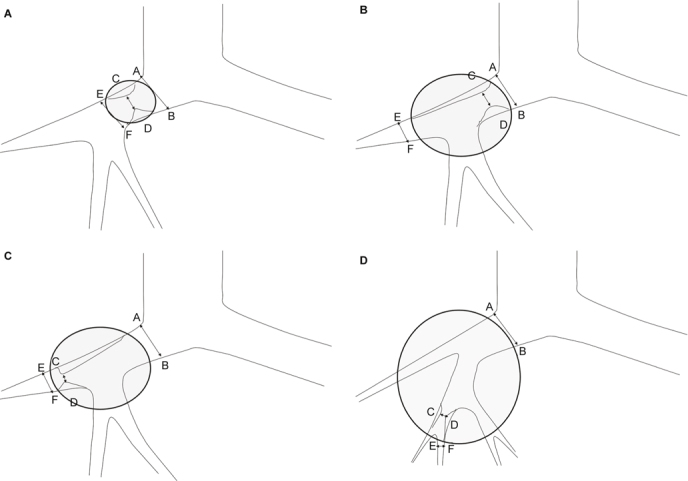Fig. 4.

(A) A lesion (circle) encases the pulmonary artery, and the encased segment doesn’t include a bifurcation. The degree of encasement was determined by the ratio between the luminal diameter at the point of greatest stenosis, CD, and the normal artery beyond the lesion at proximal end, AB. The degree of encasement = (1-CD/AB)*100%; this was labeled as type A encasement. (B) A lesion (circle) encases the pulmonary artery, and the encased segment includes a bifurcation, the narrowest segment is proximal to the bifurcation. The degree of encasement = (1-CD/AB)*100%; this was labeled as type B encasement. (C) A lesion (circle) encases the pulmonary artery, and the encased segment includes a bifurcation, the narrowest segment is distal to the bifurcation. The degree of encasement = (1-CD/EF)*100%; EF was the normal artery beyond the lesion at distal end. This was labeled as type C encasement. (D) A lesion (circle) encases the pulmonary artery and the encased segment includes at least 2 bifurcations. The narrowest point is at the segment between 2 bifurcations. The degree of encasement = (1-CD/CD’)*100%, CD’= EF+EC/EA*(AB-EF); CD’ was an approximation of an expected normal diameter of the narrowest segment, EC was the distance between the narrowest point to the normal segment beyond the lesion at distal end. EA was the distance of the vessel at normal segments between both ends of the lesion.
